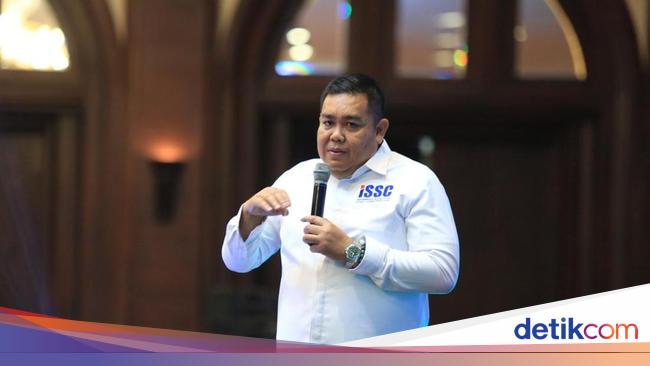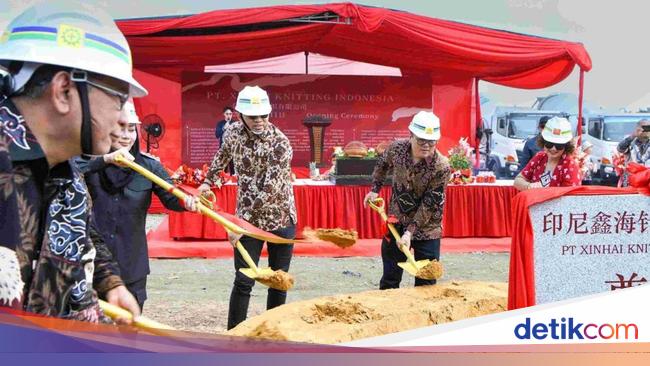
Kyle BonaguraJul 1, 2025, 07:00 AM ET
- Covers college football.
- Joined ESPN in 2014.
- Attended Washington State University.
BILL WALSH WAS a year into retirement from coaching when the call came.
He was working for NBC in 1990, fresh off a decade-long run that produced three Super Bowl titles for the San Francisco 49ers and cemented his place as one of football's greatest minds. Then New England Patriots owner Victor Kiam reached out with a proposition: run the franchise; coach the team.
"I told Victor that I was doing television and that if I had wanted to stay in coaching, I would have remained with the 49ers," Walsh later told The Boston Globe. "But you can never say never ... my impression was that if I wanted the job, it would definitely have been offered."
He passed. And in doing so, Walsh redirected football history. Had he taken the job, it might have put the franchise on a course that didn't lead to Bill Belichick in 2000. That means no Tom Brady. No dynasty.
Walsh was content, until a more personal opportunity came along -- at Stanford in January 1992.
It was an unconventional move that placed pro football's sharpest mind in college. Walsh had coached in college before, but what followed became a test of whether brilliance could adapt and thrive in a setting defined by a new set of variables. And as Walsh would learn, even for the most celebrated coaches, success is never guaranteed.
More than three decades later, Belichick, 73, made the stunning move to coach North Carolina. His 24-year reign overseeing the New England Patriots NFL dynasty ended nearly a year earlier, and now his path retraces a route once taken by Walsh -- a generation-defining coach stepping into the college game where a new challenge awaits.
UNDER COACH DENNY Green, Stanford went 8-4 in 1991 and ended the season with a trip to the Aloha Bowl and a No. 22 ranking in the final AP poll. But Green was hired to coach the Minnesota Vikings shortly after the season.
Five Stanford seniors were appointed to a committee to assist with the coaching search and sat through interviews with the two internal candidates: offensive coordinator Ron Turner and defensive coordinator Willie Shaw.
Chris Dalman, a starting offensive lineman, was on the committee and when Stanford athletic director Ted Leland convened the group in his office following those interviews, Dalman assumed it was to finalize the decision.
Then Leland hit them with something unexpected.
"What would you guys think if Bill Walsh was to come back and coach us?" he asked.
Dalman looked around, stunned.
Leland wasn't joking. The 60-year-old coach was interested.
"What do five college kids think when Bill Walsh says he potentially wants to come back to Stanford?" Dalman said. "We were all kind of in agreement. Yeah, if Bill Walsh is a reality, that's the end of the conversation."
The meeting ended with the room buzzing. Less than 36 hours later, it was official: Walsh was in.
Walsh had been the head coach at Stanford in 1977 and 1978, but by the time he returned, he was a living legend. The architect of the West Coast offense and the 49ers dynasty, Walsh coached star quarterback Joe Montana and changed offense forever.
When the team gathered to meet Walsh for the first time, the setting was casual, but the atmosphere was tense.
Sophomore receiver David Shaw, who would become the program's all-time winningest coach, remembers the meeting vividly.
"He walked in the room, and it was dead silent, and we were excited, nervous, intimidated," Shaw said. "Whatever the step is beyond instant credibility. That's what he was."
Walsh tried to break the tension with a few jokes, but they fell flat.
"Can we laugh? Is it OK to laugh?" Shaw said. "He was so many rungs above us when he walked in that room and we were in awe."
IN 1978, LELAND had just arrived at Stanford to begin a PhD program in psychology. After four years as defensive coordinator at the University of the Pacific, he had grown tired of the coaching grind and left the profession.
Walsh, then in his second season as Stanford's head coach, was looking for a defensive coach. Pacific's success in 1977 caught Walsh's attention and through a mutual contact on the Pacific faculty, he learned that Pacific's defensive coordinator from that season was already living on the Stanford campus.
One day, Leland's dorm phone rang.
It was Walsh with a proposition that would change everything.
They came to an unusual arrangement. Leland would spend his days in the psychology department and his afternoons on the field, as the outside linebackers coach. He was a small part of a larger project. Leland could tell Walsh was destined for bigger things, and Walsh sensed Leland would soon move on from coaching after completing his PhD.
That fall, Stanford beat Cal in the Big Game. On the ride back to Palo Alto, Walsh sat down next to Leland.
"He had a couple glasses of wine in him," Leland said. "And he said, 'Gee, someday I'll be an unemployed coach. If you ever need one, just remember I have a good offensive mind.'"
Several weeks later, their paths diverted. Walsh was named the head coach of the 49ers, and Leland would build a career in college athletics administration. They remained close over the years, and Walsh even tried to hire Leland to the 49ers' staff a couple times.
By the time Leland returned to Stanford in 1991 as athletics director, Walsh had been out of coaching for a few years. He retired from the 49ers after winning his third Super Bowl in the 1988 season, and Walsh had not enjoyed his three years in the broadcast booth since.
The search to replace Green started after Christmas in 1991, and defensive coordinator Willie Shaw -- David Shaw's father -- emerged as the favorite. But as that process was nearing the end, Walsh called Leland.
"Just between you and I," he told Leland, "I might be interested."
The two met for coffee. Walsh was intrigued. He wanted to think about it, which left Leland unconvinced Walsh was serious. So, he moved forward with Shaw, who verbally accepted the job. They shook hands.
Then Walsh called again. He was almost ready to commit.
"What can I do to make it happen?" Leland asked.
Walsh told Leland he wanted to sit in the football coach's chair, in his old office, to see how it felt.
"I picked him up at 11 o'clock at night, and he and I very quietly drove over to the Stanford football office and went through the back door," Leland said. "I let him in the head coach's office, he closed the door and he sat in there for about a half hour. I sat in the hallway outside, and he comes out about a half hour later and said, 'This is going to work for me.'
"And of course then, we have no choice."
Backing away from the handshake deal was difficult, but Shaw understood.
"My dad had a night -- less than 24 hours -- where he was Stanford's head coach," David Shaw said. "And so that next morning to be given that news was rough. But at the same time, Stanford had the opportunity to hire Bill Walsh. And my dad said that many times: 'You can't hire me if Bill Walsh is available. That's who you hire.'"
What followed wasn't an announcement that Walsh was returning to Stanford. It was a coronation.
THE STAFF WALSH assembled was a blend of veteran coaches, former 49ers players making coaching debuts and a couple holdovers from Green's regime.
Fred vonAppen was one of the first calls. Walsh wanted him to run the defense.
VonAppen had coached with Walsh twice before -- first during his initial Stanford stint in the late 1970s, then for six years with the 49ers. At the time, vonAppen had just signed a contract with the Green Bay Packers. But when Walsh reached out, vonAppen backed out of his deal and returned to Stanford for what would be his fourth stint at the school.
"It's like Tony Soprano calling you and saying that you got to come with, you're part of the mob," vonAppen said.
Next came Terry Shea, who was the head coach at San José State. Walsh had admired Shea for years and had once interviewed him to be the 49ers' quarterbacks coach. Shea had guided SJSU to a top-20 finish in 1990, but the opportunity to work with Walsh was too good to pass up.
"Bill says, 'Terry, I'd like you to come to Stanford. Name your coaching position,'" Shea said. "So I said, 'OK, Coach, I'd love to be the quarterback coach, the offensive coordinator and assistant head coach,' and he gave me all three titles. That's how detached he was from worrying about titles and positions and all that."
There was no other person in football Shea said he would have taken a step down for.
"Anybody would've died to coach for Bill Walsh at that point," he said.
With the coordinators in place, Walsh went about rounding up some of his former players to fill out the staff.
Tom Holmoe had played for Walsh for seven years in San Francisco and had just finished a two-year stint as a graduate assistant at BYU. (Holmoe would later return to BYU as an administrator in 2001 and spent two decades as the AD before retiring this year.) About a month before Walsh was hired, Holmoe had reached out to Walsh about being a reference in his job search, but it hadn't yet paid off. Then, like it had for others, the call came.
Holmoe had not yet heard Walsh was headed to Stanford when the phone rang in the BYU football office. The conversation was quick. Walsh asked him if he was still looking for a job, and when Holmoe said he was, Walsh delivered a career-altering offer: "Come coach with me."
Holmoe agreed to fly out the next day, but first he had to call his wife.
"I said, 'Honey, Bill just called and he's going back to Stanford. And he offered me a job.' And she said, 'How much are you getting paid?' 'I didn't ask. I'm taking the job.' She goes, 'What are you going to coach? 'I don't know.' I just assumed I was going to coach the defensive backs. 'Well, you better ask him these questions. I said, 'I'm going down to Stanford, to coach for Bill Walsh. This is my first full-time job. I'm taking it no matter what.'"
Holmoe was one of four former 49ers players who joined Walsh's Stanford staff in full-time roles, along with Keena Turner (outside linebackers), Bill Ring (running backs) and Mike Wilson (receivers). For Walsh, this wasn't about nostalgia, it was about trust. These were players who had been molded under his watch.
Defensive line coach Dave Tipton was a holdover from Green's staff. He played at Stanford, was part of the program's 1971 Rose Bowl win and spent six years in the NFL. Walsh had counseled Tipton years earlier to get his teaching credential and start coaching high school football -- something Tipton calls "the best thing he ever did" -- but he was one of the few staffers who didn't have much history with Walsh. And he was skeptical about the four newbies.
"We're going, 'Oh s---, here we go, guys who had never coached,'" Tipton said. "Well, they were all fabulous, and that's what Bill saw."
JUST AS BELICHICK'S move has done this offseason, Walsh's return to Stanford brought a spotlight to the program.
Walsh arrived on campus as a full-fledged celebrity, whose name carried weight in every NFL building and on every high school sideline.
"You could recruit anywhere in the country," Holmoe said. "Pick up the phone and go, 'Hey, my name's Tom Holmoe, I'm the defensive backs coach. I'm calling on behalf of Coach Walsh at Stanford, and he'd like to have you come out.' We would automatically be in the top two. Didn't matter who else was recruiting the kid: Florida State, Texas, Penn State. You just jumped into the top two, because of Coach Walsh."
One of the wildest recruiting trips Holmoe ever took was to a small town in Louisiana, where he convinced Walsh to help him pursue a top-ranked defensive back.
They made the usual stops -- a high school and home visit -- but the high school coach had more in store. Walsh was escorted around town like royalty, posing for photos with local business owners, shaking hands with boosters. Then came dinner. The coach had cleared out an entire restaurant, arranged a single long table in the middle, and roped it off like a VIP gala. A crowd gathered five deep just to watch Walsh eat.
Walsh pulled Holmoe aside. "What are we doing?" he asked. Holmoe shrugged: "I have no idea. Just go with it."
Walsh played the part to perfection, holding babies, telling stories.
"He looked like a politician running for mayor or senator," Holmoe said.
Stanford is only about a 20-minute drive from the 49ers' facility, so it was common for many of Walsh's former players to stop by to visit with their old coach, including Montana.
"One day Bill brought Joe over to the practice field," Shea said. "He had me stand off to the side with our three quarterbacks."
Montana was still playing in the NFL. But there he was, going through drills.
"And he coached Montana with a strong enough voice that, as he coached him on all the fundamentals -- the footwork, the mechanics -- the other three quarterbacks listened," Shea said. "And this was about an hour and a half. I thought it was really a stroke of genius the way he pulled it off."
Quarterbacks, especially, wanted to be around Walsh. He drew some of the best young passers in the country to visit Stanford. One camp included Peyton Manning, Jake Plummer and Brian Griese. And in Walsh's first full recruiting class, he landed Scott Frost -- the top-ranked quarterback in the country -- out of Nebraska.
Walsh's influence appeared in other ways.
Long before EA Sports College Football became a cultural juggernaut, its roots took hold inside the Stanford football offices during Walsh's first year back.
At some point during that season, Walsh pulled a few coaches into his office.
"He said, 'Hey, this tech company down the street is going to do this new game,'" Holmoe said. "'It's called Bill Walsh Football. Can you help them out a little? Give them some plays, work through some stuff on defense.'"
The assistant coaches weren't paid to consult, but Holmoe remembers one specific detail from those early development sessions with the programmers.
"They were talking about how players could have different skills, different speed ratings," he said. "And I kind of joked, 'Hey, can you make the Stanford DBs the fastest in the league?' And the guy goes, 'Yeah, we can do that.' I didn't know if he was pulling my leg."
And sure enough, in the first version of Bill Walsh College Football in 1993, the unnamed Stanford defensive backs were unusually fast. Their real-life counterparts certainly noticed.
"They thought it was great," Holmoe said. "That's how I first learned about player ratings."
It was the first edition of the franchise that would become NCAA Football and, now, EA Sports College Football.
FOR THE PLAYERS returning in 1992, the offense wasn't completely unfamiliar. Green -- who had two stints under Walsh in San Francisco -- had implemented principles of the West Coast offense. But the 1991 team also relied heavily on bruising fullback Tommy Vardell and a mammoth offensive line.
"We ran the West Coast offense," David Shaw said. "We knew the terminology."
But it wasn't the same as learning from its inventor.
"When Bill came on," Shaw said, "it was like going from pre-algebra to trigonometry."
Walsh installed the system from scratch, but settled for a scaled-back version compared to what the 49ers ran. The offense -- known for its short passes that incorporated running backs and tight ends -- had evolved over the years, and installing it at this stage was a new challenge.
Shea was the offensive coordinator in title, but this was Walsh's show, and Shea was happy to learn from the master, in fact, he wasn't the only established coach in the room.
Around that same time, the 49ers had just hired Mike Shanahan from the Denver Broncos as their new offensive coordinator under George Seifert. Shanahan had never worked under Walsh, so he went to Stanford to understand the system from its source.
"He would come over to our installation meetings at Stanford and sit with our offensive coaches and Bill Walsh," Shea said. "Bill would teach us the offense, and Shanahan sat there like he was going to be another quarterback or another coach on staff."
Walsh's arrival was a difficult transition for the offensive line.
"The offense he wanted to run was vastly different than what we did the year before," Dalman said. "We had this massive offensive line, but Coach Walsh's system was predicated on smaller guys moving. The install for us was completely different."
Walsh demanded more than size and strength. He prioritized footwork and mobility. The learning curve was steep. But Dalman wasn't just struck by the Xs and Os, he was impressed with Walsh's ability to build relationships.
"Coach Walsh had an ability to come up and talk to every single person -- wanting to get to know you," he said. "He wasn't an aloof guy. For everything in his résumé, he'd walk up to anybody on the team and ask how things were going, who they were, where they were from."
It was a trait that stuck with Dalman. But there was another side.
"Coach could care about your health, your family, tell you when you did something good," Dalman said. "But he could also turn around and give you a cutting critique. And it didn't matter who you were. He was going to tell you exactly how it wasn't good enough.
"You didn't want to let him down. He held everyone accountable. Coaches. Players. It didn't matter."
WITH WALSH'S OFFENSIVE pedigree and the national spotlight back on The Farm, expectations were high. Stanford entered the 1992 season ranked No. 17, but it quickly became apparent this would be a team more defined by its defense.
In the opener against No. 7 Texas A&M in the Disneyland Pigskin Classic in Anaheim, Stanford held the Aggies to just 10 points, but managed only one touchdown of its own in the loss.
Despite the early setback, Stanford rebounded quickly.
Led by future Hall of Famer John Lynch, the defense delivered all season. Months before Drew Bledsoe would be the No. 1 pick in the NFL draft, Stanford suffocated him and Washington State in a 40-3 win. Neither UCLA nor USC -- both top-20 teams -- reached double digits against the Cardinal.
"Bill could be a pain in the ass on the sideline," vonAppen said. "But he was mostly focused on the offense."
The defining moment might have come in South Bend, where Stanford dominated No. 6 Notre Dame 33-16 in what would be the Irish's only loss of the season.
"That's a remarkable experience anytime, but particularly when you bust the Irish on their home turf," vonAppen said. "I remember watching hot dog wrappers blow around in the empty stadium afterward. That's when I thought, 'This is a crowning achievement for this outfit.'"
It was also the day Lynch cemented his reputation as the enforcer of Stanford's defense, though he got off to a bad start.
"[Lynch] screws up his option responsibility, and they score as part of the deal," Tipton said. "Then he gets hit in the head -- probably would've been ruled out today -- but he comes back like he'd put on a Superman cape.
"Notre Dame had this little running back named Jerome Bettis. He fumbled three times -- mostly because of John."
Stanford finished tied with Washington atop the Pac-10 standings at 6-2 and missed out on its first trip to the Rose Bowl since 1972 because of a head-to-head loss to the Huskies. The consolation was a trip to Florida to face Penn State in the Blockbuster Bowl.
The season ended much the way it had taken shape -- behind a dominant defense -- as Stanford overwhelmed Penn State 24-3.
Stanford finished 10-3, tied the school record for wins and closed the year ranked No. 9 in the AP poll -- its fourth-best final ranking in school history.
WHEN LELAND HIRED Walsh, he hoped he would be there for five years. Walsh made it through three.
The first season was everything Stanford had dreamed -- 10 wins, a top-10 ranking and national relevance restored. But the next two years were a grind. The roster turned over, Walsh's recruits hadn't quite matured, and the results reflected that: a 4-7 record in 1993, then 3-7-1 in 1994.
"Those next couple years, we were so young on the defensive side and we were small -- we just hadn't developed yet," David Shaw said. "But the offensive side, we were still tearing people up. We were just getting outscored in a lot of those games. So we were a little disjointed, but man, we still felt really good about what we were doing.
"And I think with the losing, Bill felt tired at the end."
He rejoined the 49ers briefly in the late '90s in a front office role, but his heart was never far from The Farm. In 2004, he returned to Stanford as a special assistant to Leland.
"He loved Stanford," Leland said. "It gave him a place where he could come in and do meaningful work. He could walk around campus -- nobody asked him for autographs, nobody bugged him. He was just another person. That's the culture."
Walsh taught classes, wrote a book and was a sounding board for coaches, including Jim Harbaugh when hired in December 2006.
"When people asked me what he did, I'd say: 'Whatever he wants,'" Leland said. "We gave him a place to hang his hat. And he didn't care about the money. I think sometimes guys that are older that still have a lot to give, they still want to make a contribution."
It was a fitting postscript for a man whose first great football work -- his 1958 San José State master's thesis on football schematics -- came in an academic setting and reads less like a graduate project and more like a prototype for the modern game. Even then, decades before any of his Super Bowls, Walsh was diagramming space, studying leverage and predicting the future of the sport.
After his health declined following a leukemia diagnosis, Walsh stayed connected to the program. He visited the football offices, watched film and offered insight when asked. In the spring of 2007, just months before he died at age 75, he met with a high school quarterback on a recruiting visit -- a quiet conversation with Andrew Luck that bridged generations.
Now, as Belichick begins his own unlikely chapter in college football, he'll walk a similar uncertain path. The settings may differ. But the question remains the same.
What happens when a legend arrives not to finish, but to start over?

 3 months ago
47
3 months ago
47

















































